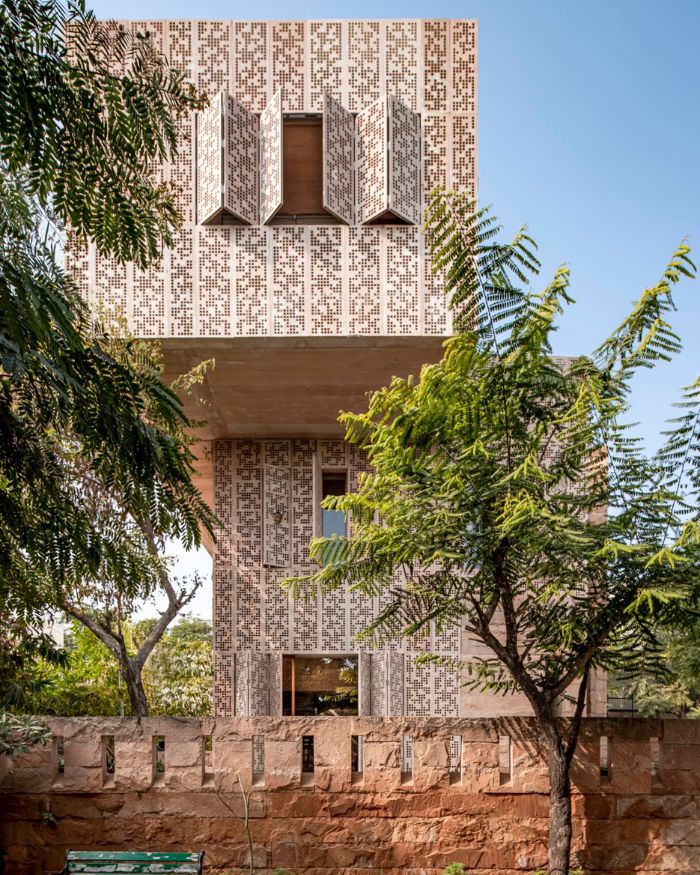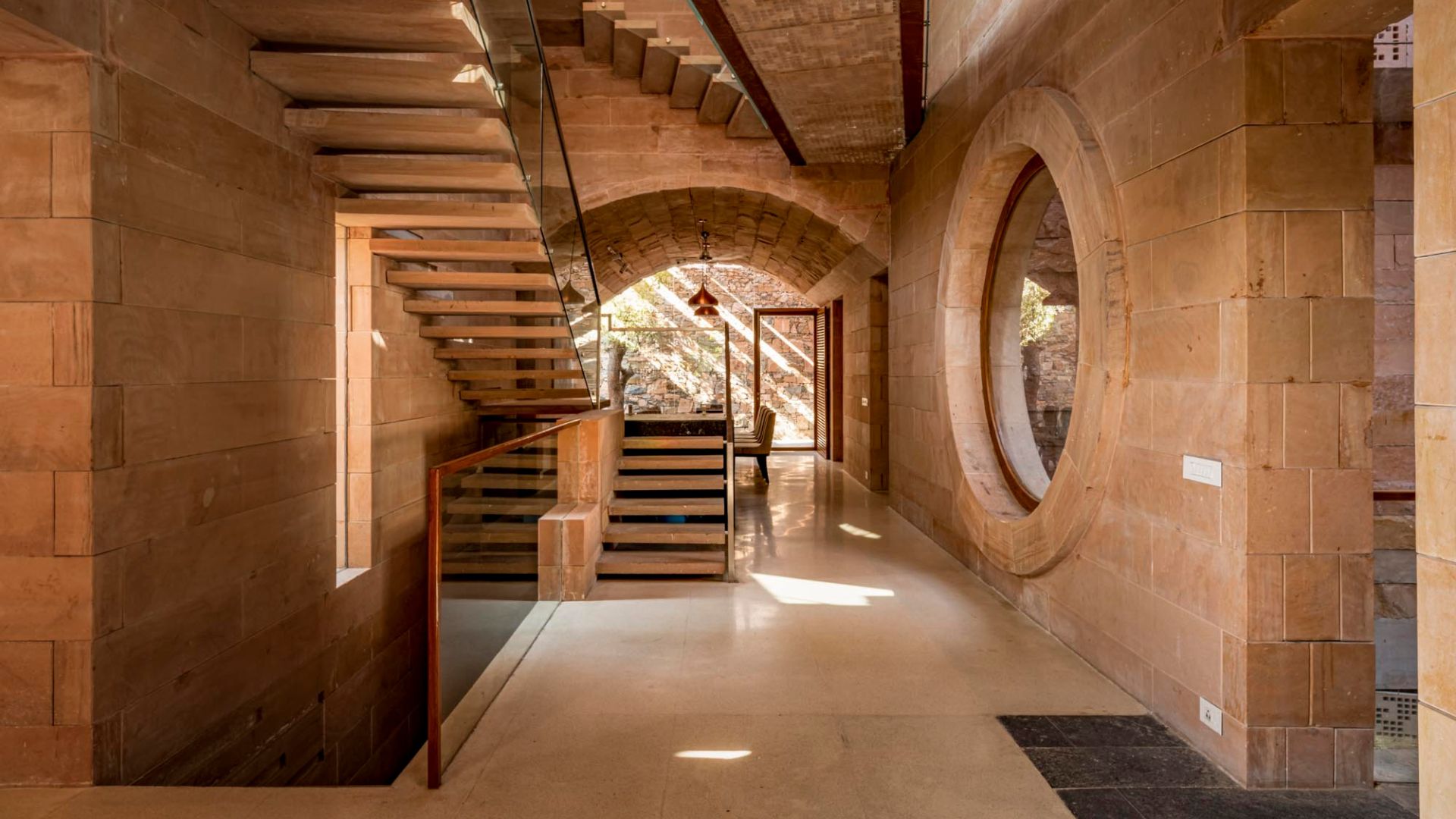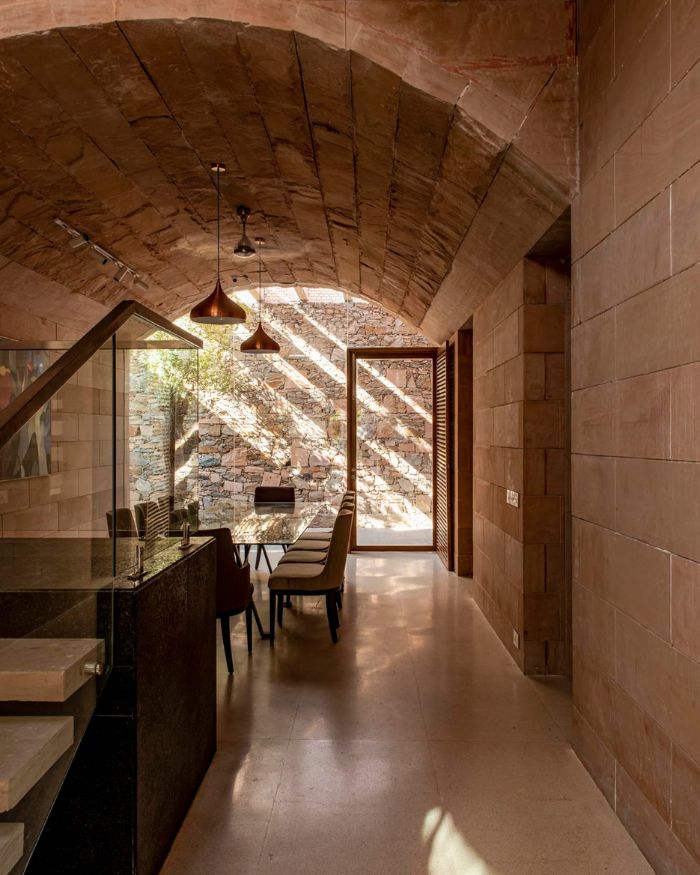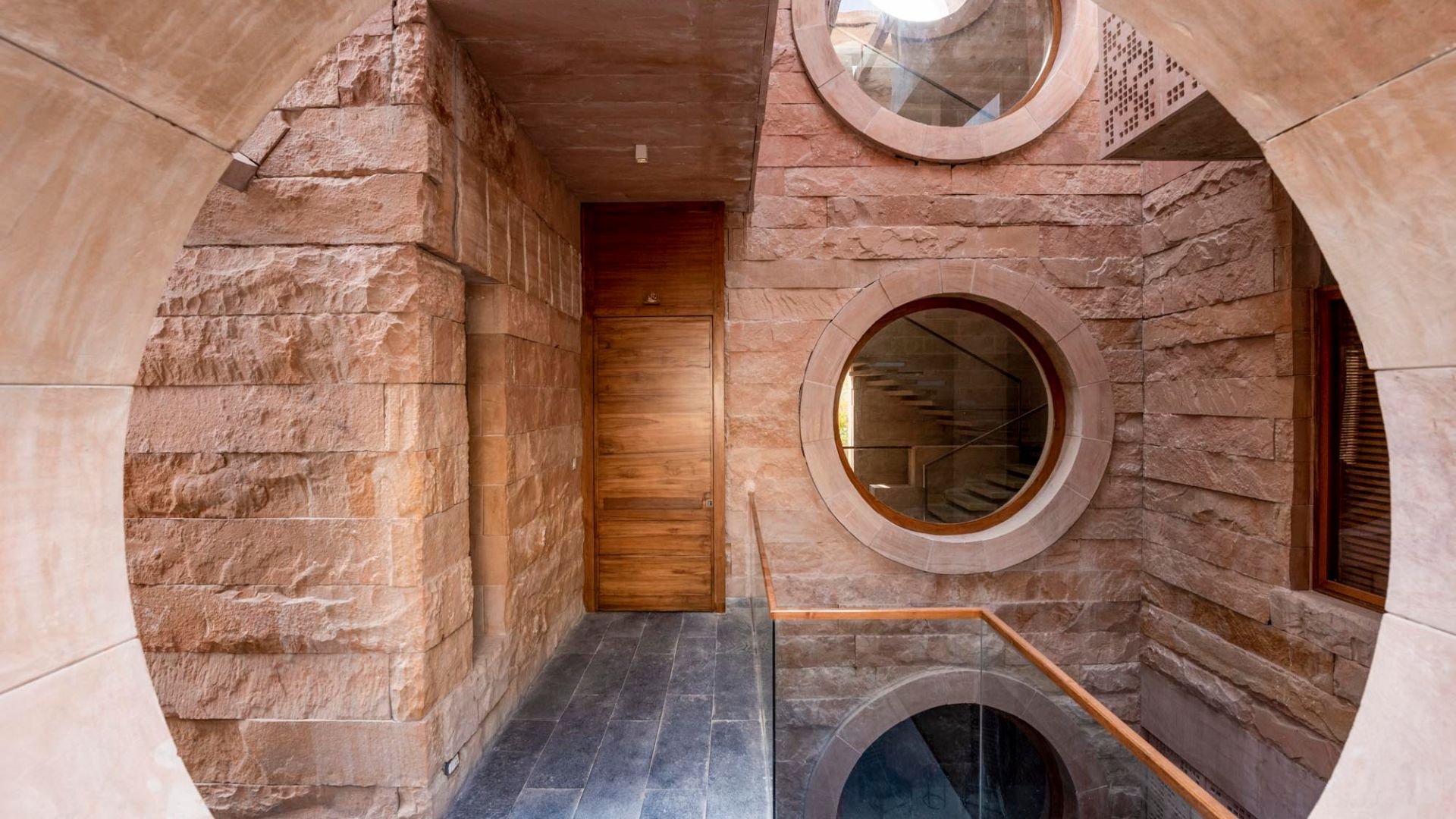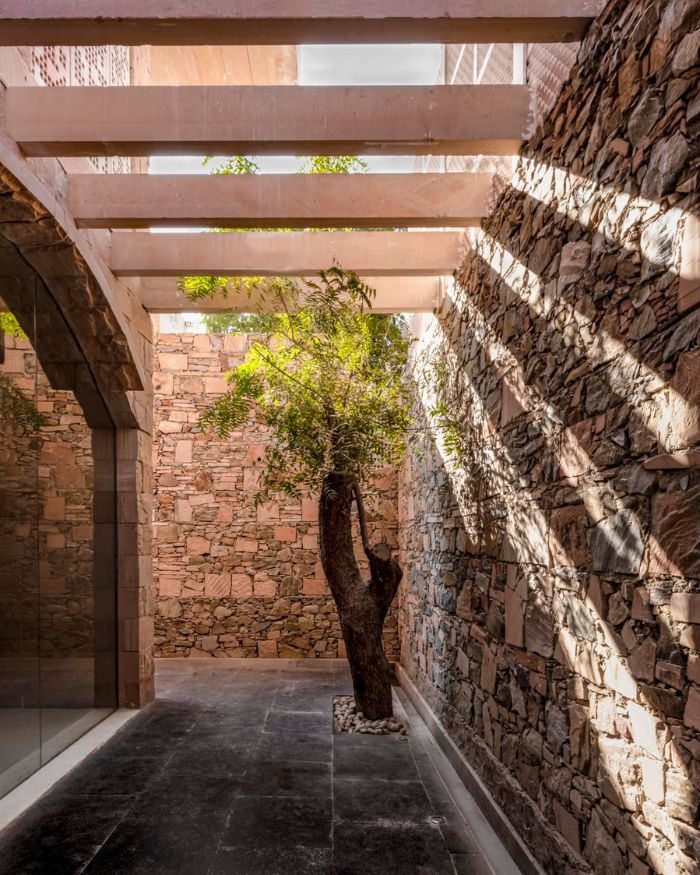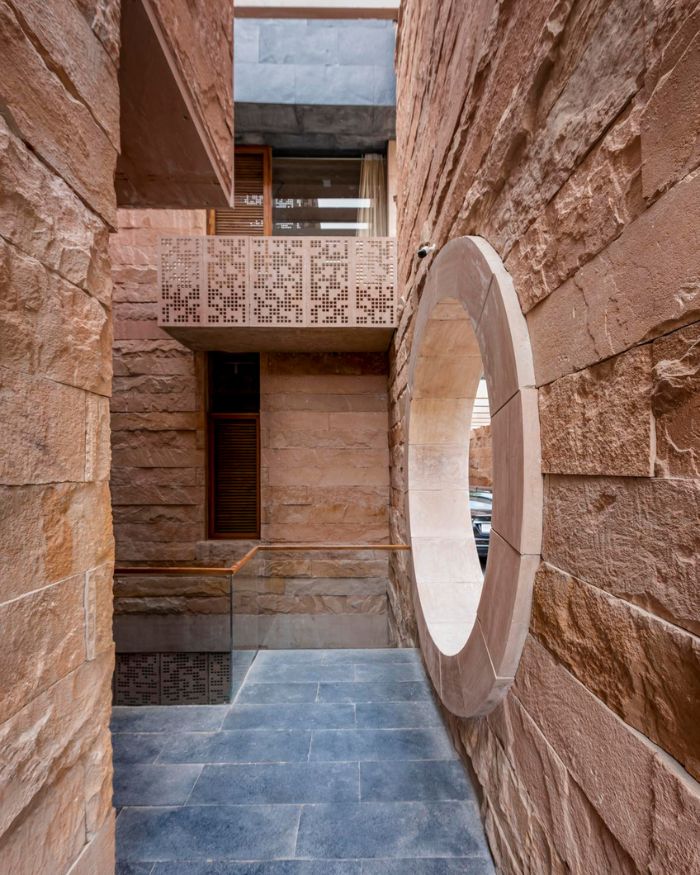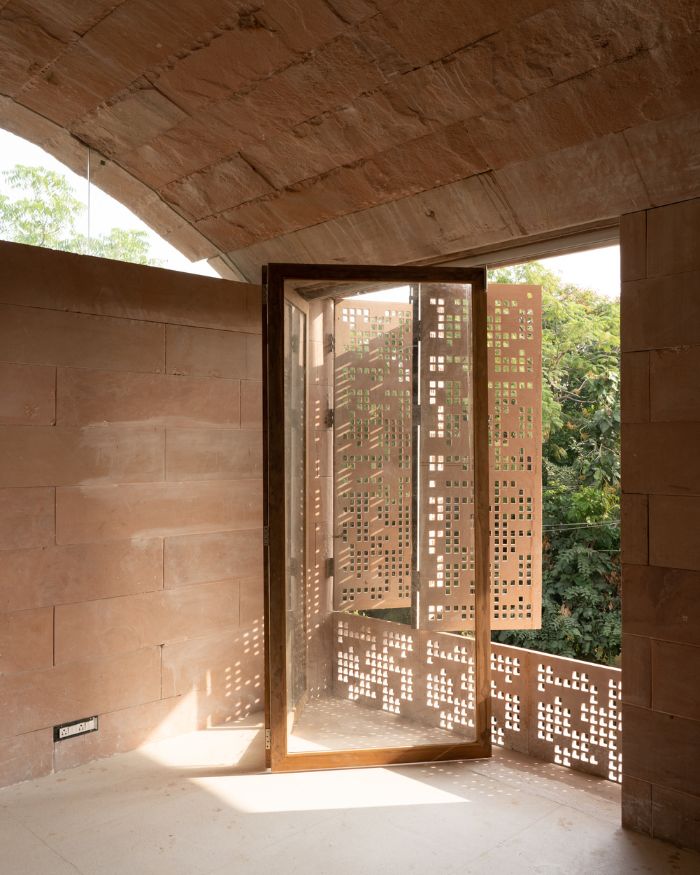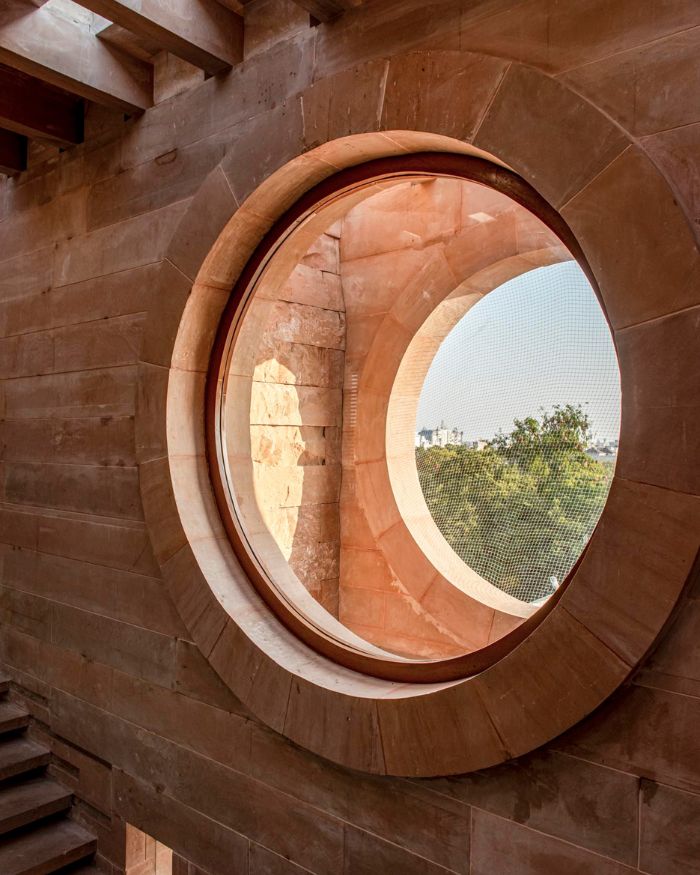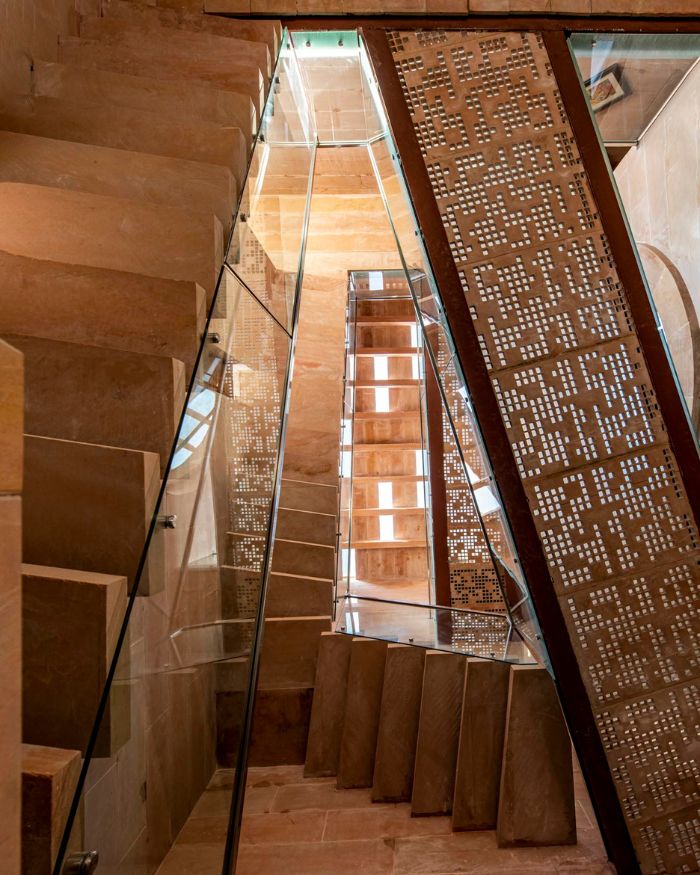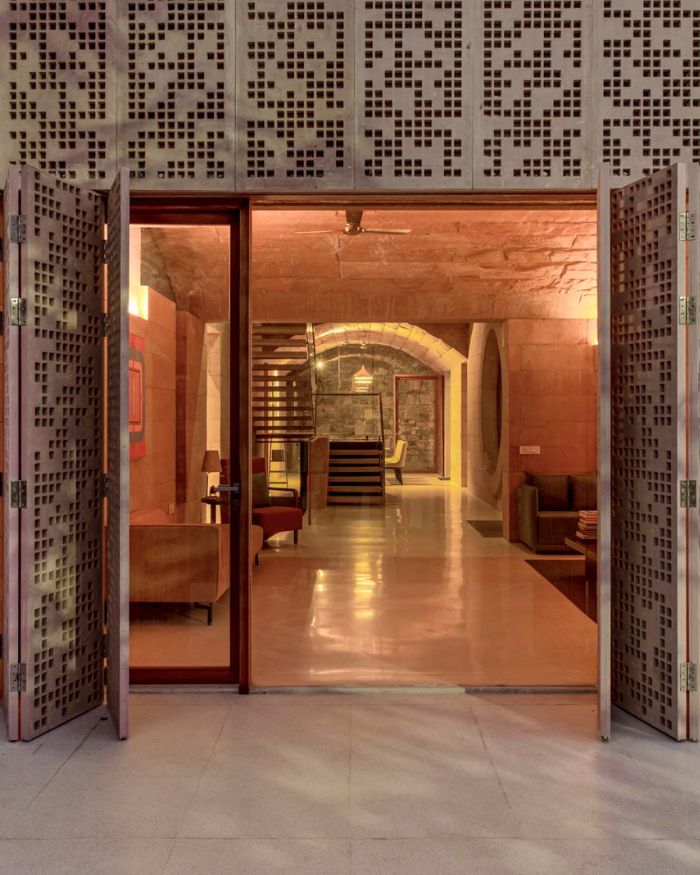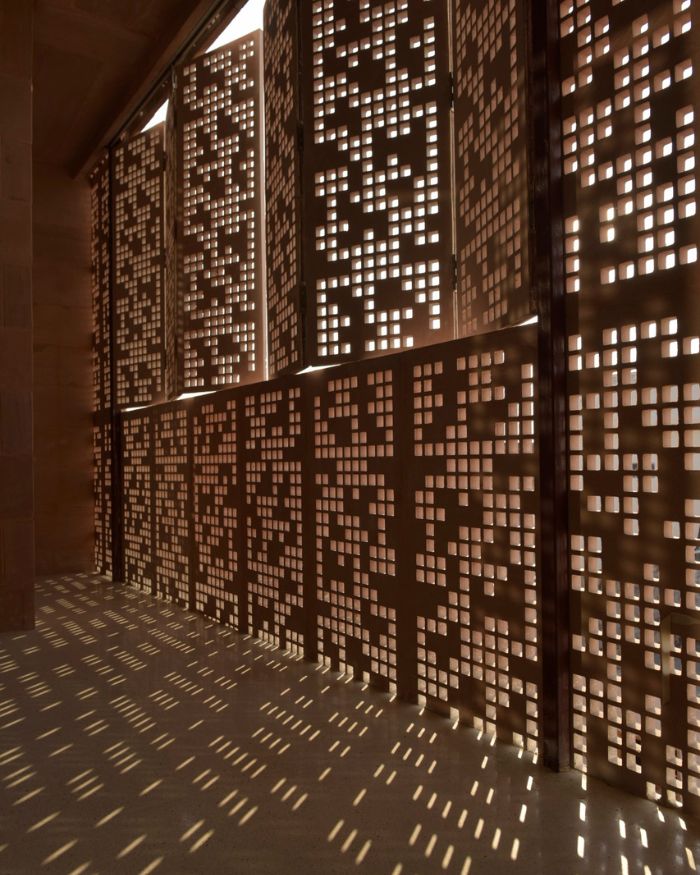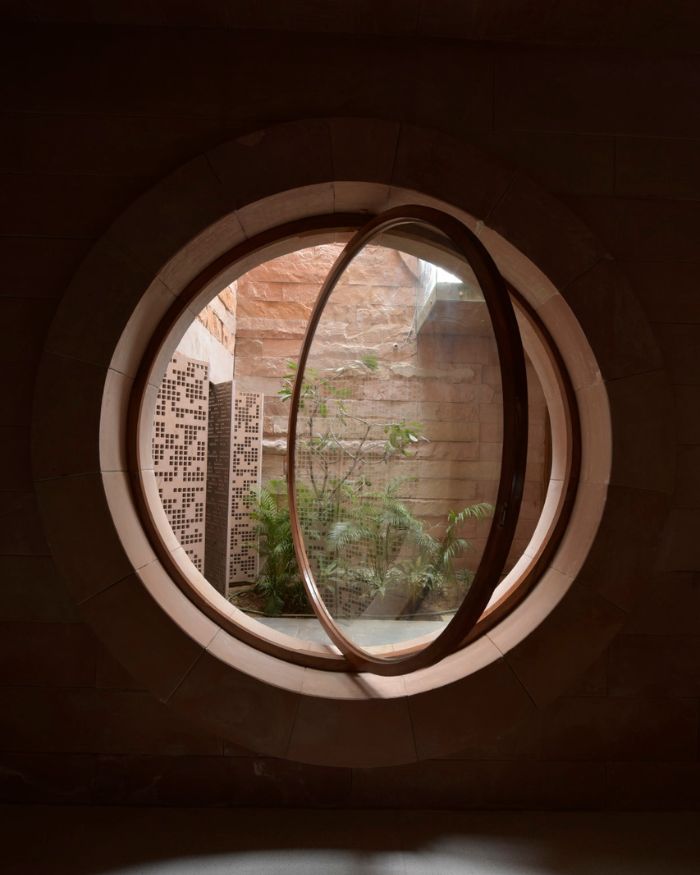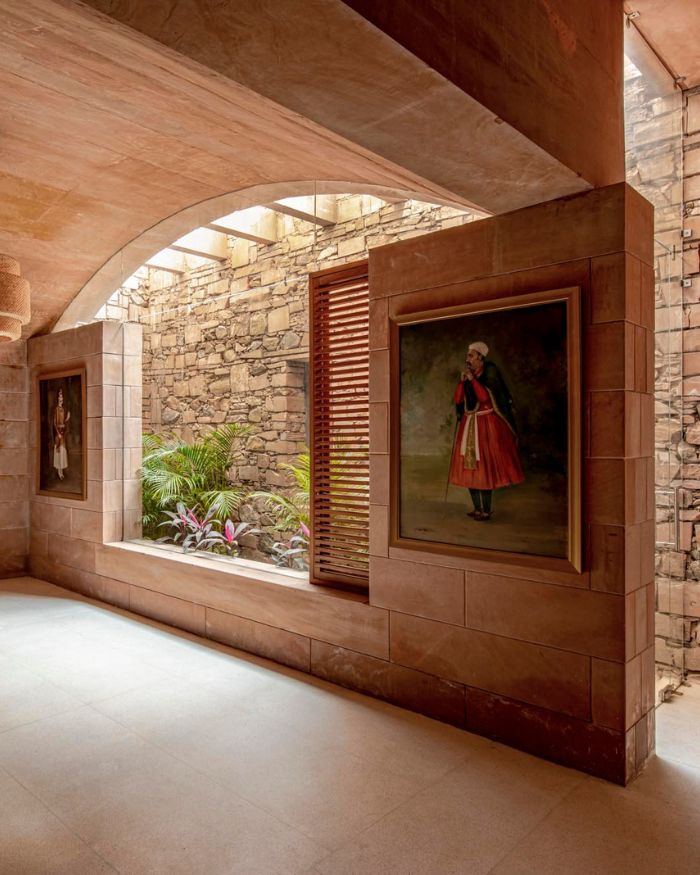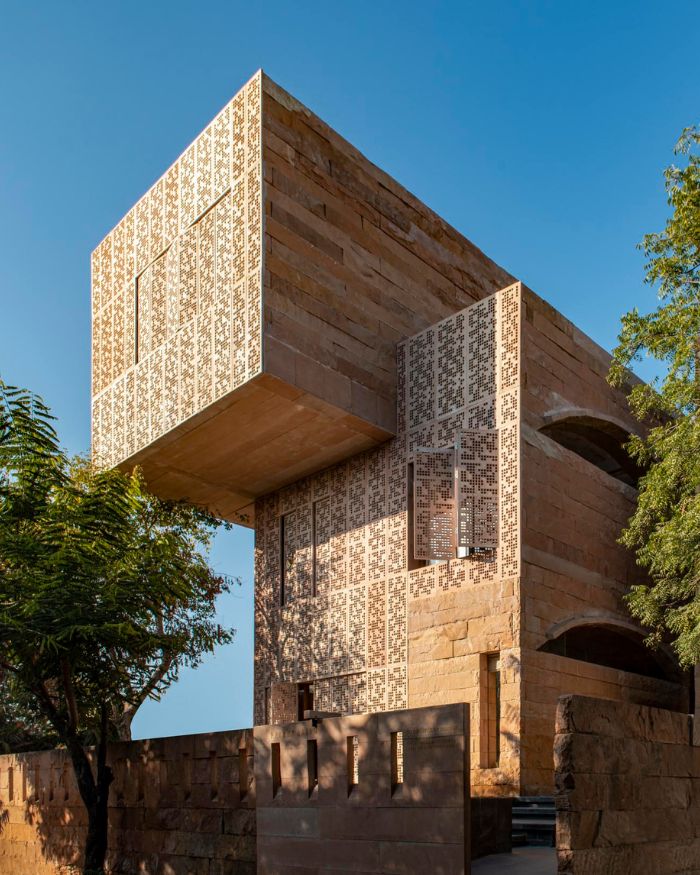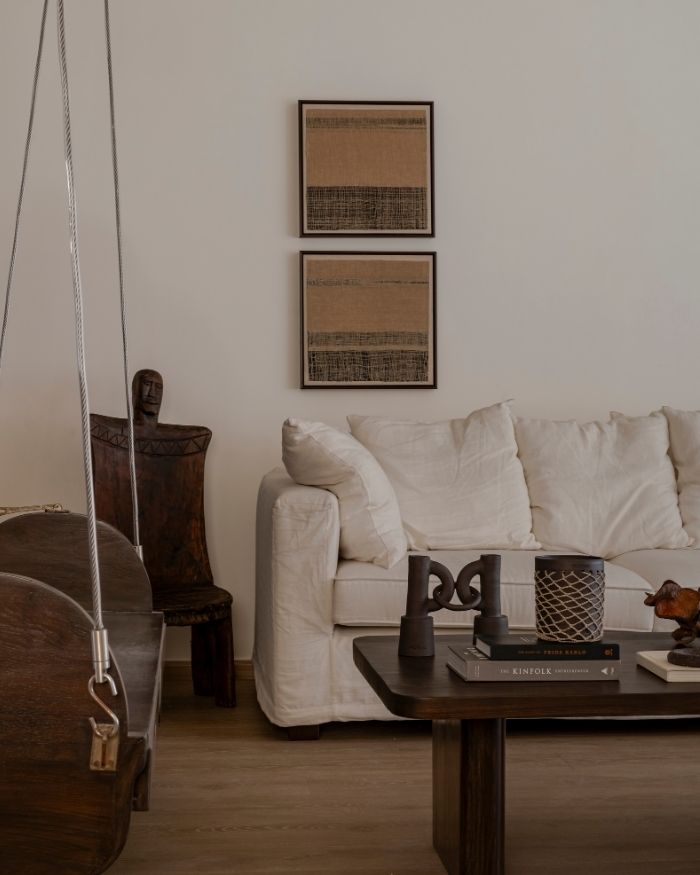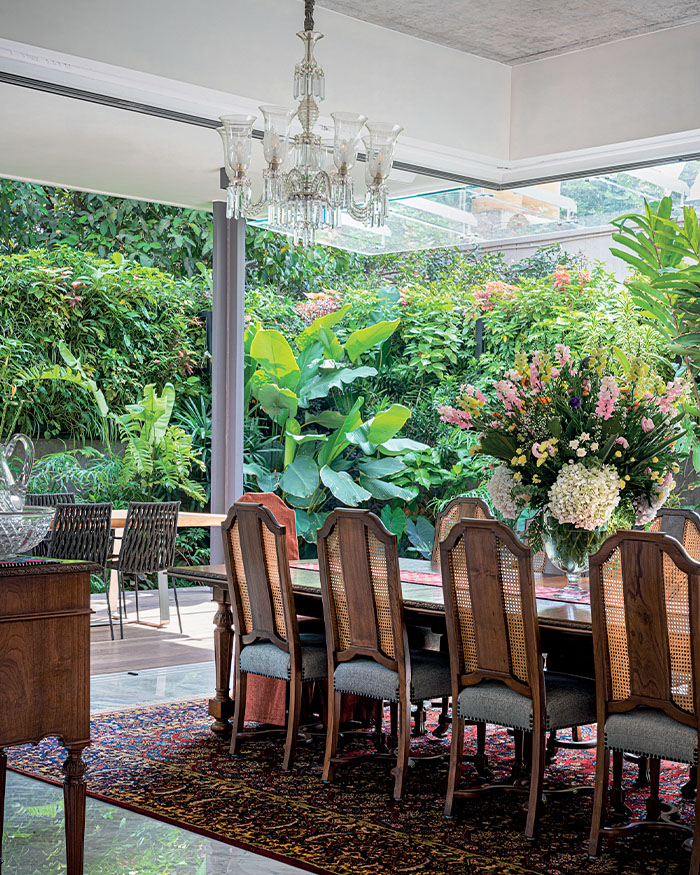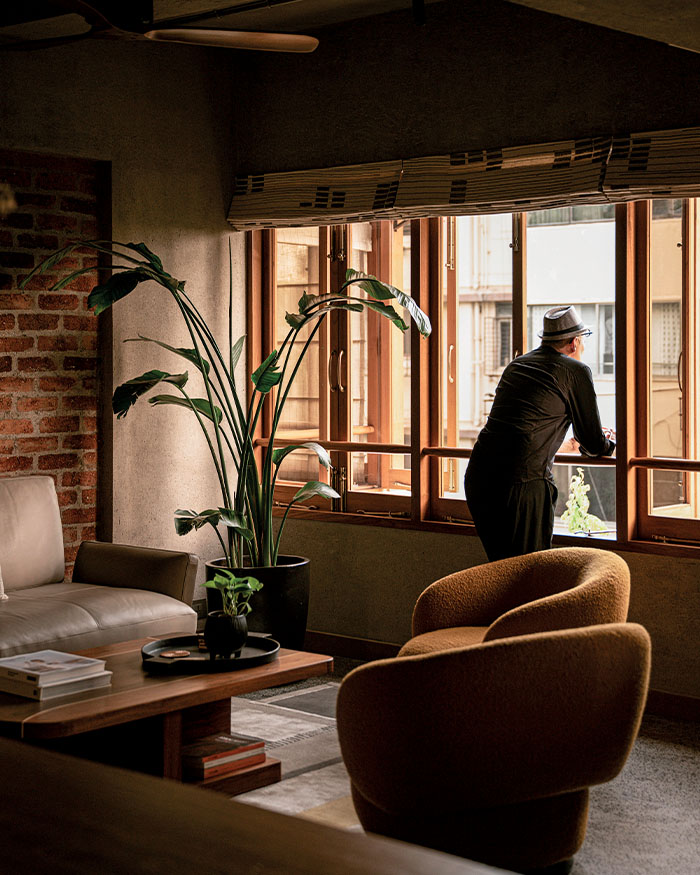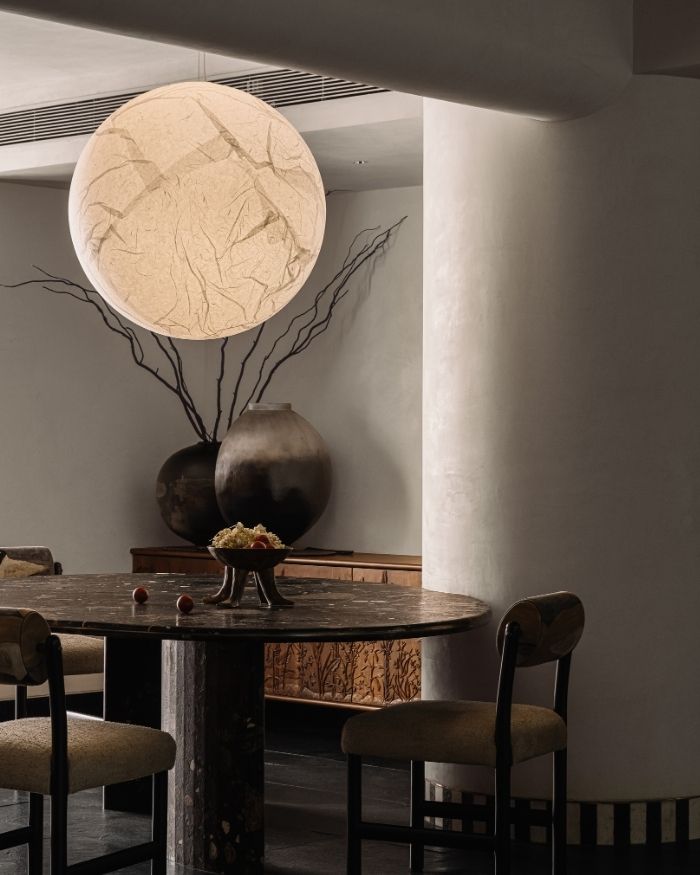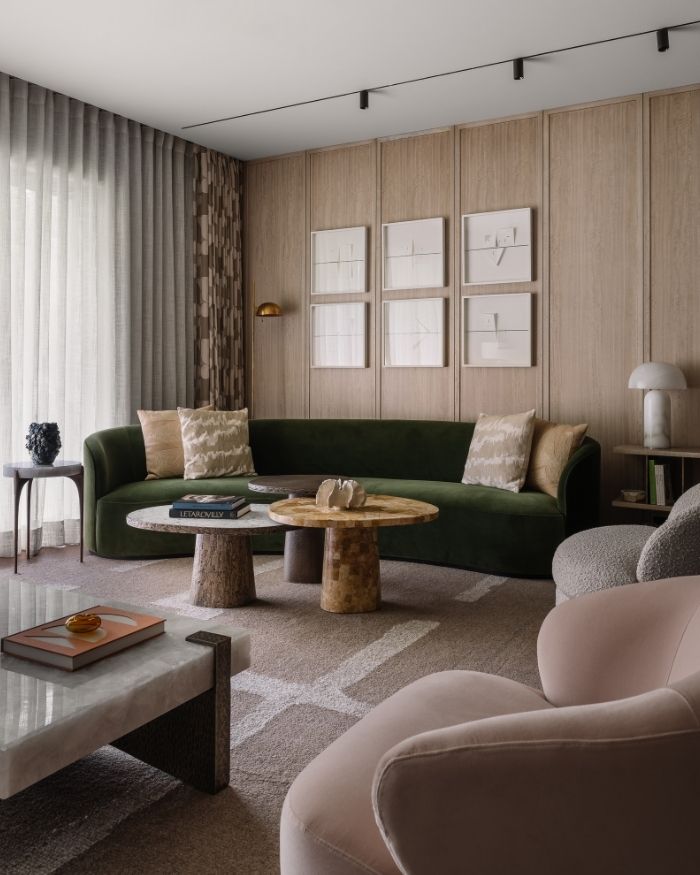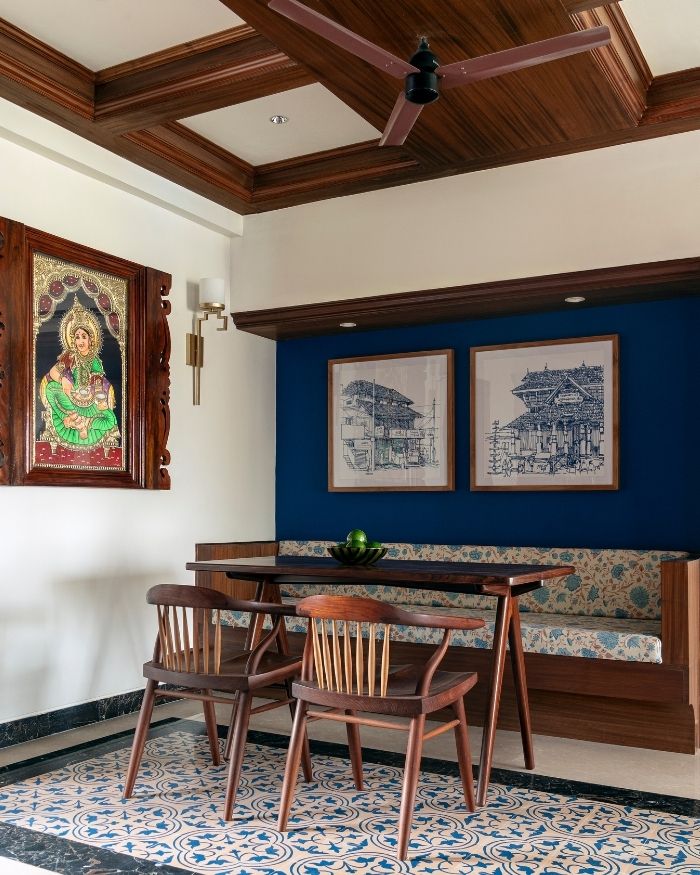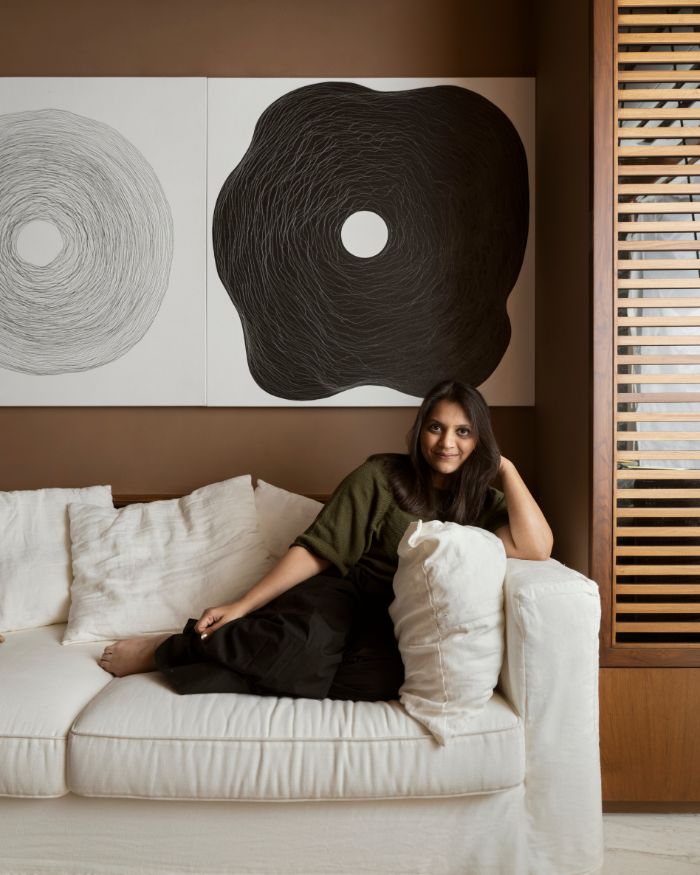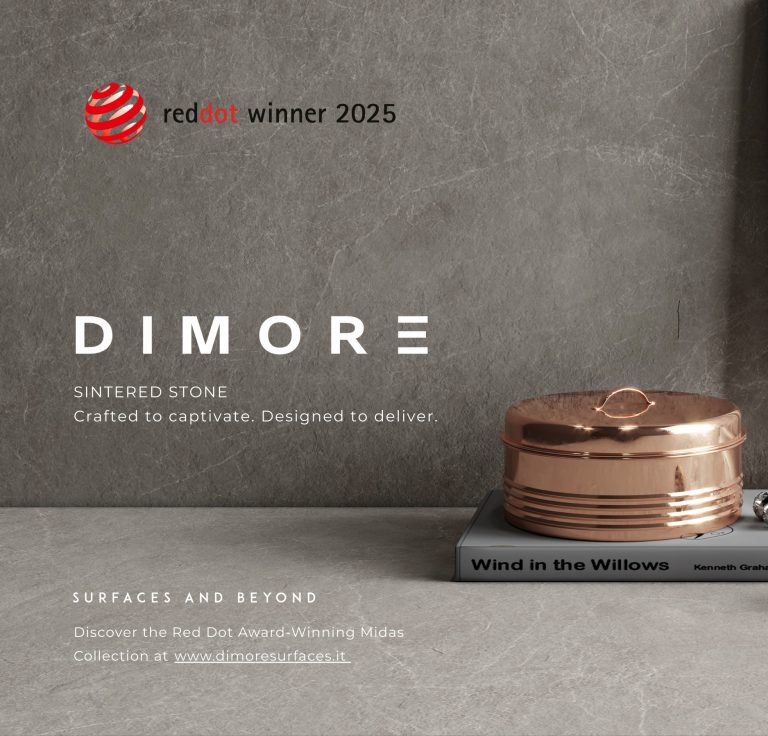When did building with vernacular materials become a radical idea? Despite the growing discourse around climate-responsive design and sustainable architecture, the use of local materials and regional craft often gets relegated to the aesthetic periphery. But The House of Solid Stone by Malik Architecture proves otherwise, placing material intelligence, thermal performance and indigenous knowledge at the centre of architectural innovation.
Located on the outskirts of Jaipur, this private residence was commissioned by a member of the royal family of Dundlod, formerly associated with Taj Vivanta. The brief was clear, Kamal Malik, Founder and Principal Architect, tells us, “Our initial discussions were based on the fundamentals of how our ancestors could successfully employ the use of local construction materials to deal with issues of climate as well as use the resources that were available to the Rajasthani craftsmen. I suggested to him that we could use age-old construction methodologies and design a very contemporary home for him, which would be built on principles of sustainability.”
“Traditional building practices carry generations of accumulated intelligence, rooted in climate, culture and material knowledge. Our intent wasn’t to replicate these practices, but to take the next evolutionary step in these traditions,” — Kamal Malik
